Core MAX10
If you want to work on FPGA projects in a team or work on Edge-AI, you can check out ONE WARE Studio!
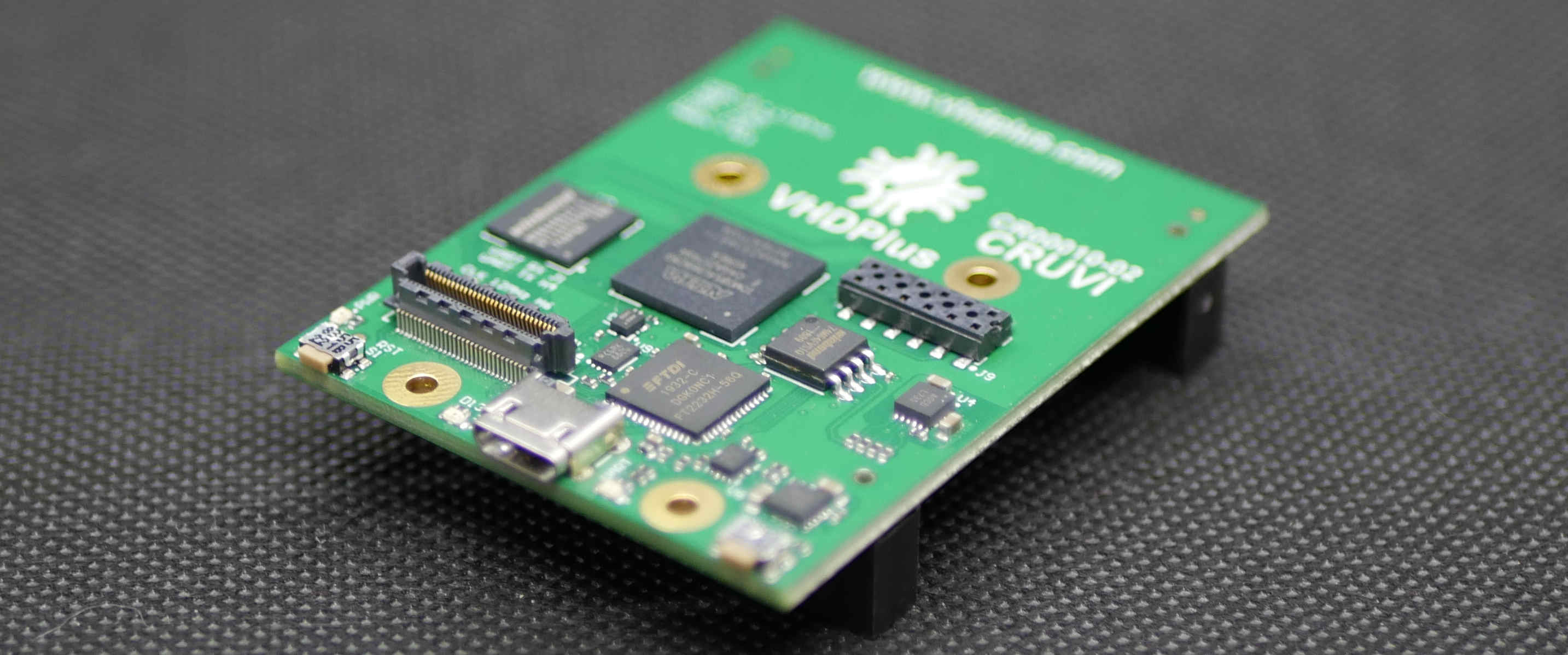
This board isn't build for a one time use - It is an investment in all the projects you can now instantly control with just one piece of hardware
The Board
The Core MAX10 is the entry into FPGA programming for everybody who wants to use all the power of FPGAs. With its many I/Os, internal ADC, large RAM, Flash and an onboard USB programmer, you can even realize complex projects with many components and an internal Arduino-compatible processor that work together.
Unlike other cheap development boards it features a CRUVI High Speed connector that allows to connect e.g. Camera, Display, RAM, Ethernet and a lot more extensions with differential I/Os so the FPGA can reach its full potential.
The FPGA
The MAX 10 FPGA with 8,000 logic elements can handle tasks from controlling robots to handle audio and video signals. Unlike other FPGAs, it features internal Flash and an ADC, so you can directly save your programs on the chip and don't have to use an external ADC to read analog values.
The Integration
Form the libraries to the graphical pin assignment, with the Core MAX10 and the VHDPlus IDE you get the best FPGA programming experience. Just connect the board with an USB cable and you can not only program the FPGA, but also send and receive data via the same USB connection.
Core Overview
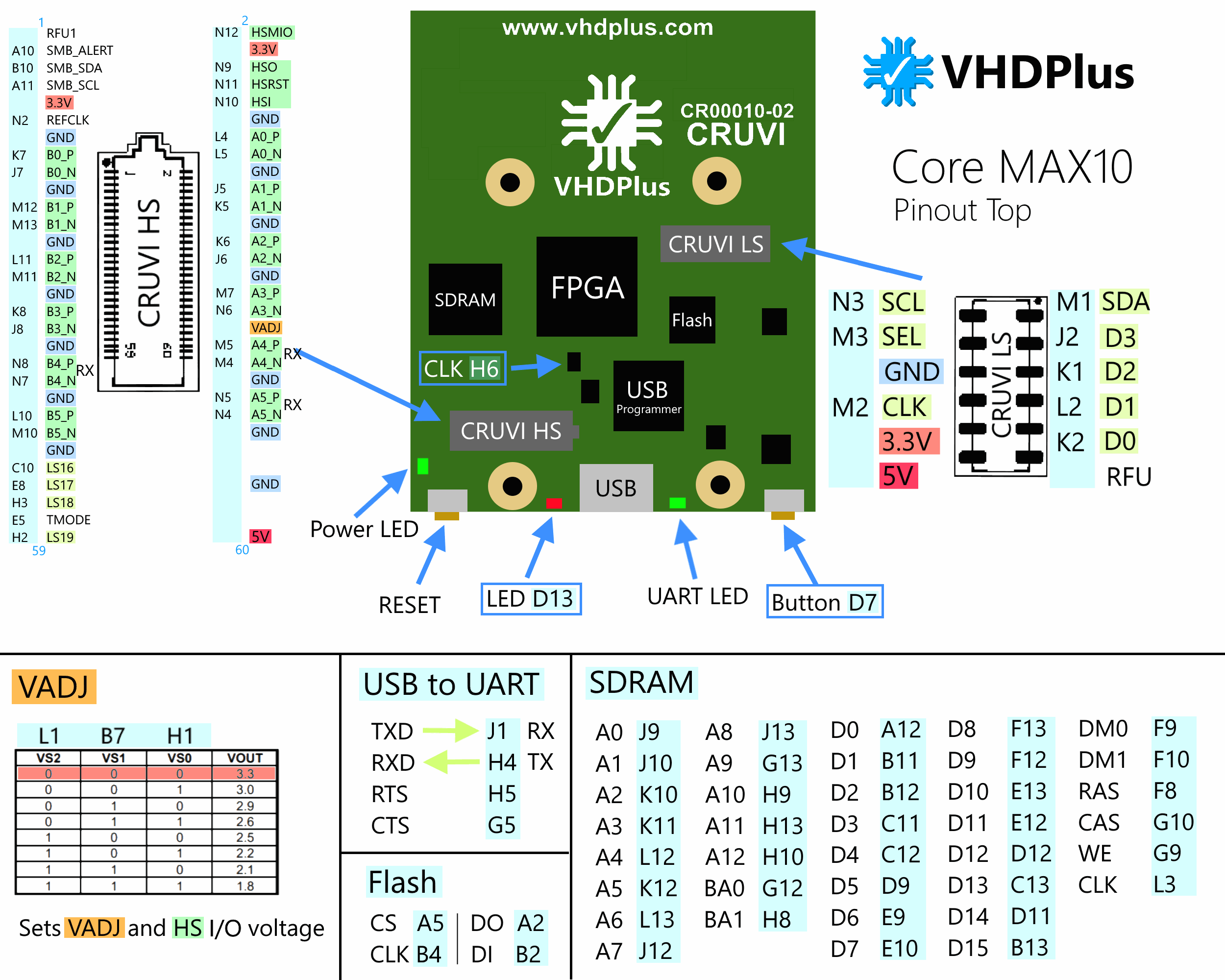
On the top, the Core MAX10 features an onboard LED, button, switch and a CRUVI High Speed and Low Speed connector.
With the USB port you can program the FPGA and use debug functions.
⚠️ When you use other languages than VHDP as top file, you must set the I/O voltage. Otherwise the pins with green highlighting will be disabled!
With the onboard Reset-Button, the FPGA loads the program from flash that was last programmed with long-term programming.
The pins L1, B7 and H1 set the I/O voltage of the green marked pins. Set all pins to '0' so you use 3.3V as I/O voltage. When you create a signal with 3 bit named VS and a 1 bit signal named VS_EN, they are automatically connected with the right pins while compiling.
VS : out std_logic_vector(2 downto 0) := "000";
VS_EN : out std_logic := '1';
⚠️ 3.3V I/O Voltage! Use Level Shifter to Connect 5V Hardware
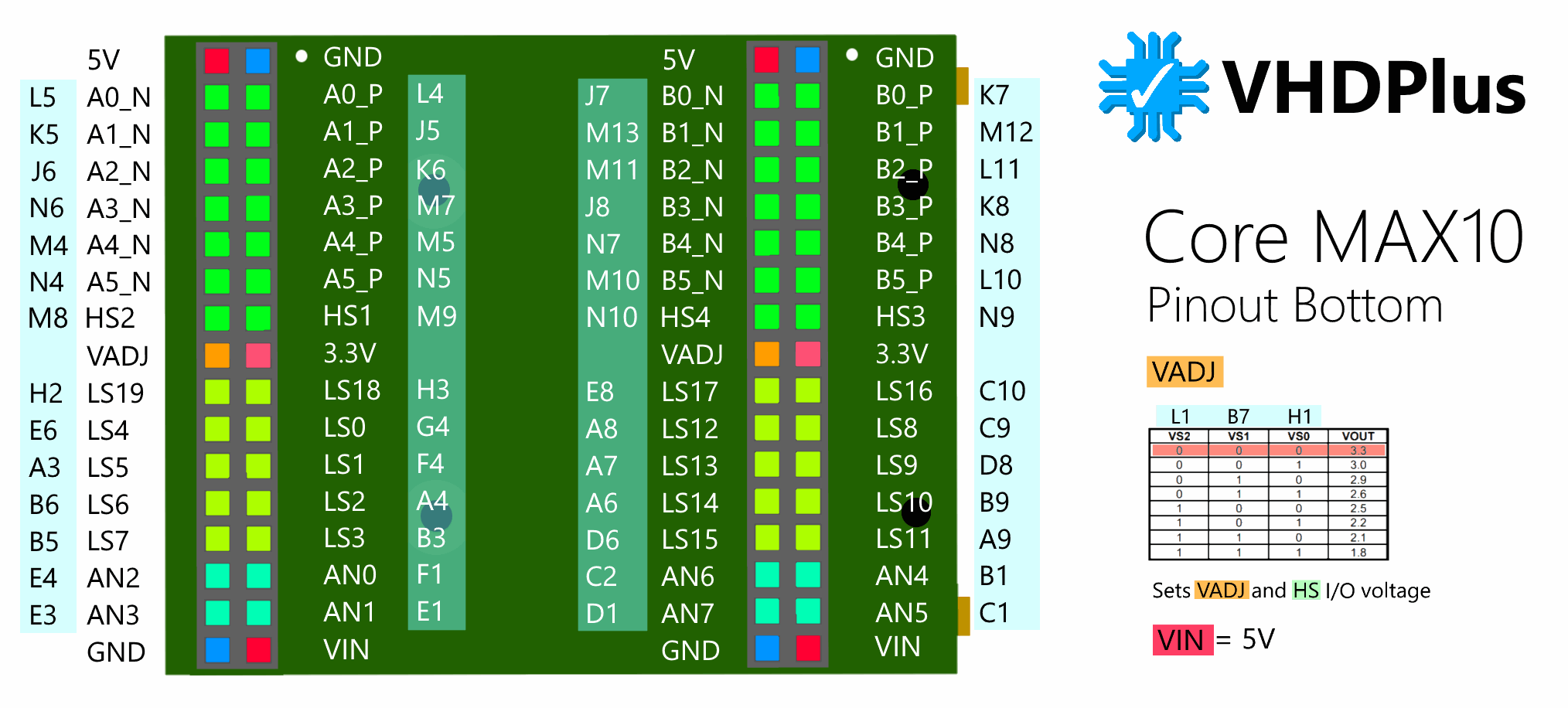
Other hardware can be connected on the bottom with the 2.54mm headers.
Keep in mind:
- The ADC I/Os can be used like normal I/Os.
- The I/Os A0-B5 and LS16-19 are also connected with the CRUVI HS connector and depending on the extension you connect with the HS connector, some of them may be unusable.
Specs
MAX 10 FPGA (10M08SAU169C8G):
Logic Elements - 8,000
RAM - 378 Kb
Configuration Memory - 2.24 Mb
ADC - 1 Mio. Samples/s
- 12 Bit
- 8 Inputs
PLL - 2
- > 300 MHz
18 x 18 Multiplier - 24
Configuration Images - 2
SDRAM (W9864G6JT-6): - 64 Mb
Flash (W74M64FVSSIQ): - 64 Mb
Oscillator (DSC6011ME2A): - 12 MHz
Dimensions
If you want to design your own shield or CRUVI extension, here are the dimensions:
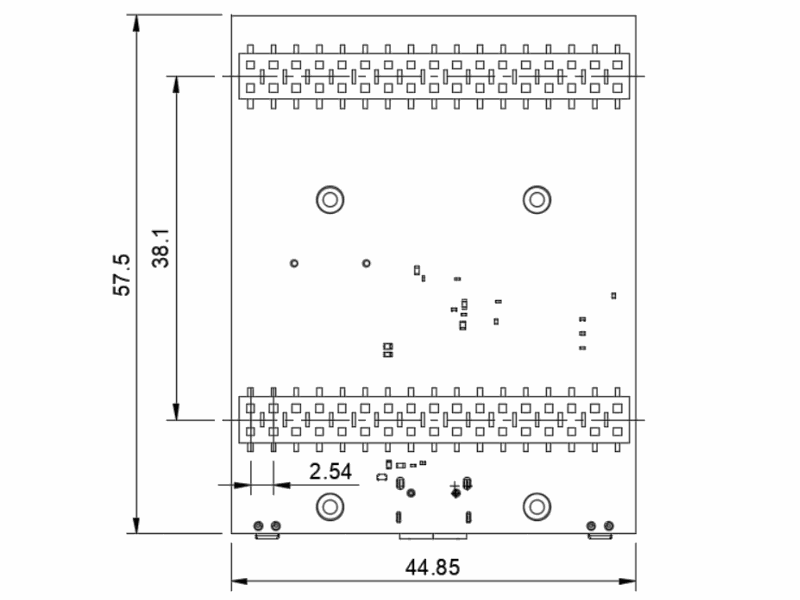
For the CRUVI extensions you can find the documentation here.
Software
Don't be overwhelmed by all the features of the Core MAX10. Because of the deep integration in the VHDPlus IDE, you don't have to think about where to connect the SDRAM and how to set the I/O voltage. The I/Os are already defined in the libraries and in the graphical editor, you can can just click on the pin to connect.
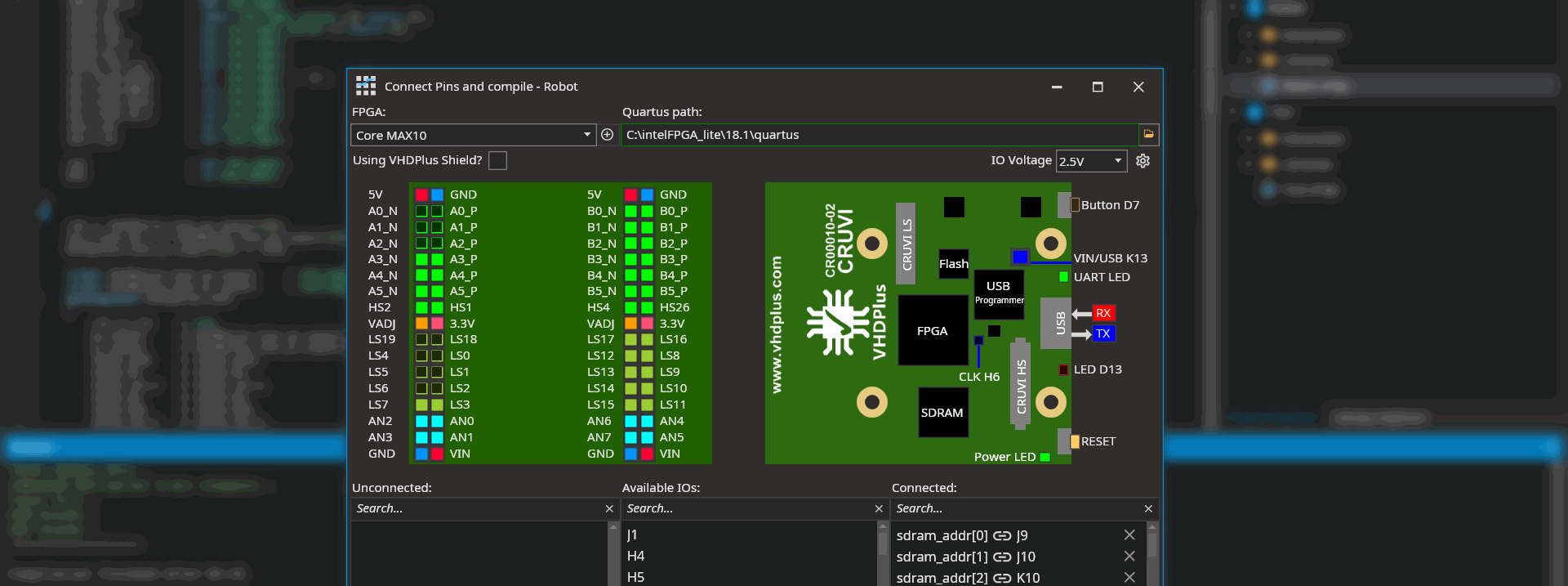
Reasons for an FPGA
1. Speed
With an FPGA you can not only program software, but also hardware. Here is a quick comparison:
| Software | Hardware | |
|---|---|---|
| Parallel Processes | Usually 1 | As many as needed |
| Cycles for one operation | From 4 up to dozens depending on operation | 1 |
| Operations per Cycle | 1 | As many as needed |
If you need the speed, you program hardware and for the rest you can still put a processor on the FPGA.
2. Versatility
Normally you have e.g. 8 PWM pins and 2 UART, 1 SPI and 1 I²C controller. With an FPGA you just take the UART component from the libraries and add it to your design as often as you want.
But also protocols that are not used that often, like I²S for audio data, are no problem.
As Arduino
IMPORTANT: By programming the hardware with VHDP, the FPGA is much faster. This overview only compares the processor you can add to your FPGA design.
| VHDP Core | |
|---|---|
| Type | 32 Bit |
| Frequency | 116 MHz (50 MHz default) |
| RAM | 64.3 Mb |
| Flash | 1.37 Mb (64 Mb External) |
| ADC | 1 MHz 12 Bit |
You get more speed and RAM so even image processing gets possible. Next to the processor, you can add additional parallel processes to e.g. control a motor.
Shield MAX10
If you want to supply the Core, all the extensions and other components (e.g. motors) with one power adapter or battery. Check out the Shield fitting to the Core MAX10 here